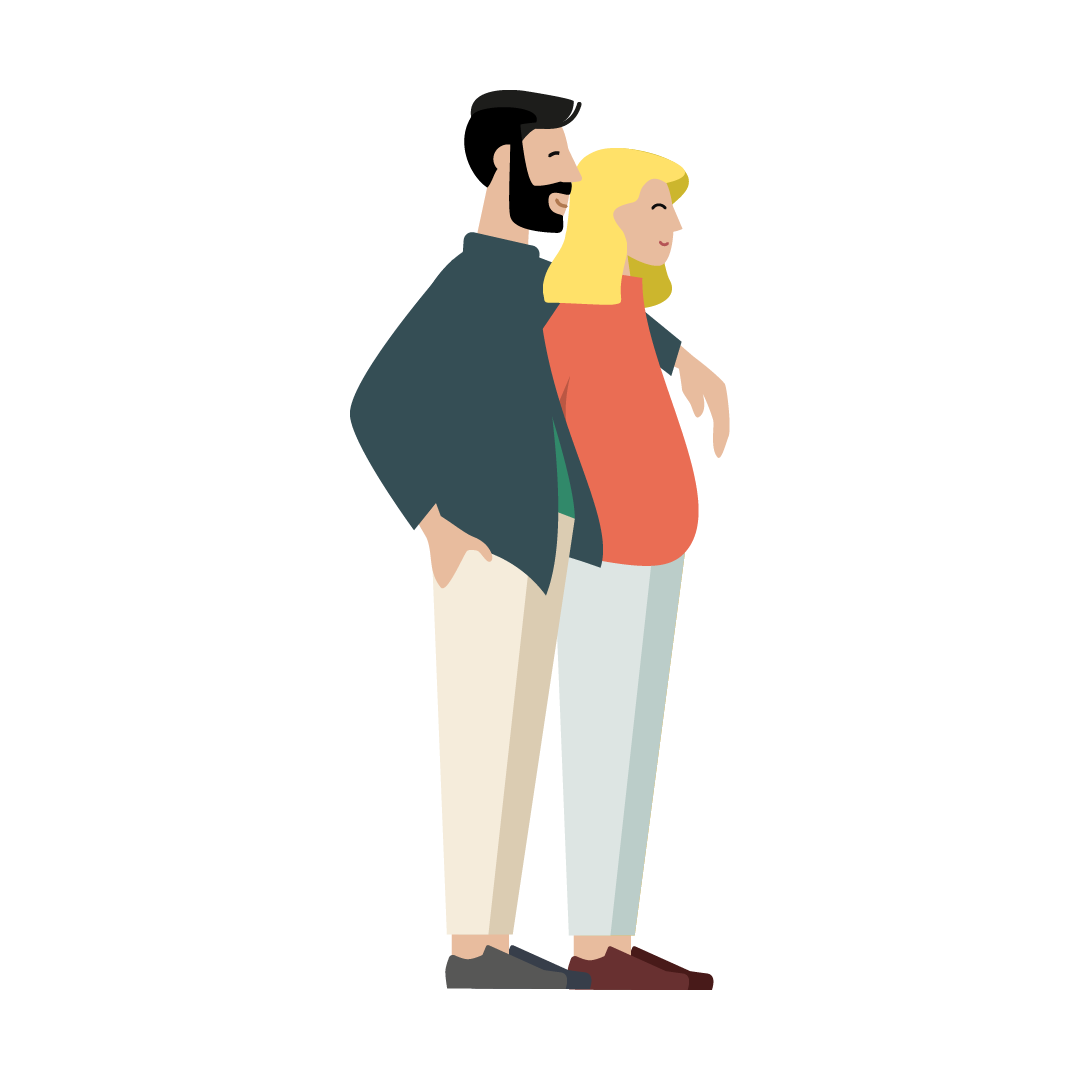
For greater chances of family happiness
Planning a Family supplementary insurance
Falling pregnant is not a given. We offer support if you have difficulties conceiving naturally.
Key benefits
Who is Planning a Family suitable for?
Planning a Family insurance is ideal for women who want to decide for themselves when to start a family and increase their chances of a successful pregnancy.
Why Planning a Family insurance makes sense

Basic insurance pays for artificial insemination and some other fertility treatments, but after three unsuccessful treatment cycles, it’s over. That’s when the Planning a Family supplementary insurance comes in.
-
Cover for when family planning starts later
Most women today are 30 to 34 years old when their first child is born.1 However, the biological clock is ticking – fertility declines rapidly from the age of 30. Only one in five women2 between 35 and 40 gives birth to a child as the result of natural fertilisation. The dream can still come true: hormone treatments and artificial insemination increase the chances of pregnancy.
18%
With insemination
For women under 35, the combination of hormone therapy and insemination increases the chance of becoming pregnant to 18% per cycle3. The partner’s sperm is injected directly into the uterus.
29%
With in vitro fertilisation (IVF)
The chances of a successful pregnancy are higher with in vitro fertilisation than with insemination. The success rate for women under 35 is 29% per cycle3. In vitro fertilisation means that the egg is fertilised with sperm outside the body.
-
High cost contribution to artificial insemination
One treatment cycle usually costs between CHF 6,000 and CHF 8,000 per cycle, depending on the clinic. However, prices vary from clinic to clinic.
A calculation example for the costs of artificial insemination:
- Three rounds at CHF 6,000 cost CHF 18, 000.
- Sanitas covers 75% of the costs up to a maximum of CHF 12, 000.
- You pay CHF 6,000 instead of CHF 18 ,000.
-
Continue treatment seamlessly – after a waiting period
You benefit after 9 and 24 months, respectively.
With the Planning a Family supplementary insurance, the waiting period for prenatal diagnostics is 9 months from commencement of insurance and for artificial insemination 24 months. In other words, Sanitas only begins covering costs after 9 and 24 months, respectively. Why?
Family planning takes time
The treatment is a lengthy, multi-stage process:
01
Diagnostic tests
A doctor will investigate the cause of infertility.
02
Hormone treatment
The use of medication stimulates the function of the ovaries.
03
Artificial insemination in the womb
Medical professionals inject the partner’s sperm directly into the uterus.
The costs of these measures are covered by basic insurance – for a total of three attempts at artificial insemination. Then supplementary insurance comes into play. It takes around two years from the decision to start a family to get to this point.
-
Take out the insurance now, save precious time
Take out the Planning a Family supplementary insurance in good time. This allows you to continue your treatment seamlessly once the costs covered by your basic insurance have been exhausted. It makes sense to take out a policy at the latest when you start planning your family and want to increase your chances of getting pregnant. Long-term support is important to us. The benefits are fully available to you again after each birth.
-
Age-related premiums
If you have to undergo an outpatient procedure, we not only help you with all the organisation, we also send you attractive vouchers from our partners so you can focus on your recovery.
Age 18-25
26-30
31-35
36-40
Premium in CHF 14.40
21.90
39.10
76.60
Daysy fertility tracker: free for Sanitas customers
When you take out the Planning a Family supplementary insurance plan, you will receive a personal code by email. You can order the fertility tracker free of charge from the Daysy Shop for Sanitas customers. The Daysy fertility tracker calculates your fertile days more accurately and more easily than other methods and shows you the current cycle phase. Further advantages:
Distinguish between non-fertile and fertile days with an accuracy of over 99%
Easy to operate
Free app and partner app
Lifetime support and two-year warranty
No hidden costs and free delivery
Further information on how Daysy works, including study results, can be found here.
Overview of benefits
Basic insurance |
Supplementary insurance
Planning a Family | |
|---|---|---|
| Calculate premium
| ||
Costs of treatment by reproductive health physicians for a maximum of three rounds |
| |
– |
| |
– |
| |
If the risk of trisomy is 1/1000 or higher based on the clarification procedure of the Swiss Society for Gynaecology and Obstetrics (SGGG) |
|
Downloads
Frequently asked questions
-
Why is it worth taking out this supplementary insurance at an early stage?
It is possible that natural fertilisation does not work. You are then entitled to three treatments, which are covered by basic insurance. If these are also not successful: If you have taken out Planning a Family supplementary insurance at an early stage, this means you can continue your treatment seamlessly. In this way, you avoid waiting times. This is because the waiting period – i.e. the time from the conclusion of the contract during which Sanitas does not participate in cost coverage – is 24 months.
-
Who can take out Planning a Family supplementary insurance?
Only women can take out this supplementary insurance – and only if a pregnancy could theoretically occur naturally. This means that the insurance does not cover the costs of artificial insemination for same-sex couples.
As is usual with supplementary health insurance plans, a health check is carried out in advance. Unfortunately, you cannot take out this supplementary insurance plan if you have already undergone artificial insemination or have been diagnosed with fertility problems.
-
Is treatment also possible abroad?
At present, Sanitas does not accept any healthcare providers abroad. Treatments must be carried out in fertility centres recognised by Sanitas – in accordance with the list of recognised service providers.
-
Until what age is the Planning a Family insurance valid?
The insurance plan expires on 31 December in the year in which a woman turns 44. For treatments that have already begun, the date of commencement of treatment applies.
The insurance may be taken out at the earliest one month after the woman’s 18th birthday and at the latest by the end of the year in which she turns 35.


